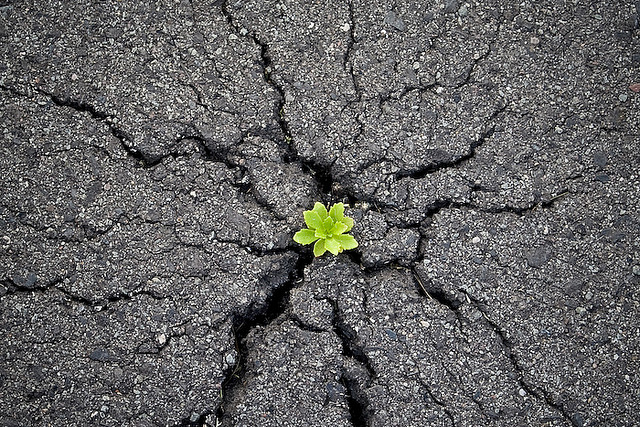This post originally appeared on the Carbon Talks blog.
A remarkable book has landed on my desk. Titled “2 Degrees: The Built Environment and Climate Change”, this volume by Alisdair McGregor, Cole Roberts, and Fiona Cousins details some of the climate challenges we’re facing, while also presenting practical and realistic solutions for how our built environment can not only contribute less to climate change, but also help us cope with its effects. In reading through, what has really struck me so far is the breadth of what “built environment” encompasses.
Often the first thing to come to mind is buildings. The popularity of LEED, Passivhaus, and other sustainable building standards has raised the profile of green buildings and their tangible and intangible benefits such as decreased energy costs, increased employee productivity, or an improved ability to capture and re-use rainwater. Cities across Canada are instituting sustainable building policies and ensuring that future buildings will be green, energy-efficient, and part of an integrated low-carbon cities. But the story doesn’t end with buildings; in fact buildings are just the beginning. What connects us all, in a way that we barely notice, are roads.
Worldwide, the amount of paved and unpaved road is estimated to be over 100 million km – that’s more than enough to drive all the way to the moon and back. The University of Washington has estimated that between two to four terajoules of energy is required for every lane-kilometer of roadway constructed. That’s roughly equal to the amount of gasoline required by 750,000 cars driving along that single kilometer stretch. This represents an enormous potential for emissions reductions; any innovations in road construction can drastically cut down on the energy consumption required by our municipalities and governments to build roads, highways, bridges, and even parking lots. Fortunately, such innovations are already here.
Similar to green building standards, the GreenRoads rating system, developed by University of Washington and engineering and construction firm CH2MHill, scores road projects based on a series of sustainability criteria. This system has been used on over 120 projects to date, and covers criteria such as use of recycled or local materials, environment management systems, incorporation of transit, and storm water management.

Here in British Columbia, companies such as Green Roads Recycling based out of Fernie BC, have shown that it’s possible to recycle road materials onsite. Traditionally, roads that have reached the end of their lifespan were ground up, and the residue was transported away to be stockpiled or remade into new asphalt with the addition of new material. Green Roads technology allows the asphalt to be heated and lifted, ground up, and placed right back on the road. In its 22 years of operation, Green Road Recycling has repaved over 4500 kilometers of road in the province representing some 6 million tonnes of recycled asphalt. Other approaches include incorporating recycled plastic or recycled aggregates into roads, both of which can significantly reduce the energy required to re-pave an existing section, or build a new road.
Parking lots also represent a huge potential for greening. Incorporating patches of grass and vegetation can significantly reduce water run-off while replenishing groundwater and reducing the heat island effect of a bare asphalt lot. The City of Toronto is a Canadian leader in green parking lots, having developed a set of guidelines and participating in the Green Parking Lot Program, a program from GTAA Partners in Project Green that helps to pay for the design and construction of green parking solutions, including permeable pavement, native landscaping, and curb-cuts.
So while the gleaming glass LEED Platinum office towers sprouting up across Canada are the more attractive and noticeable elements of our fledgling low-carbon municipalities, let’s not forget the most modest and overlooked parts of our cities that can help contribute to emissions reductions. You won’t get home without them.
(Feature photo courtesy of Mike Haufe/Flickr, green roads photo courtesy of EPA)

